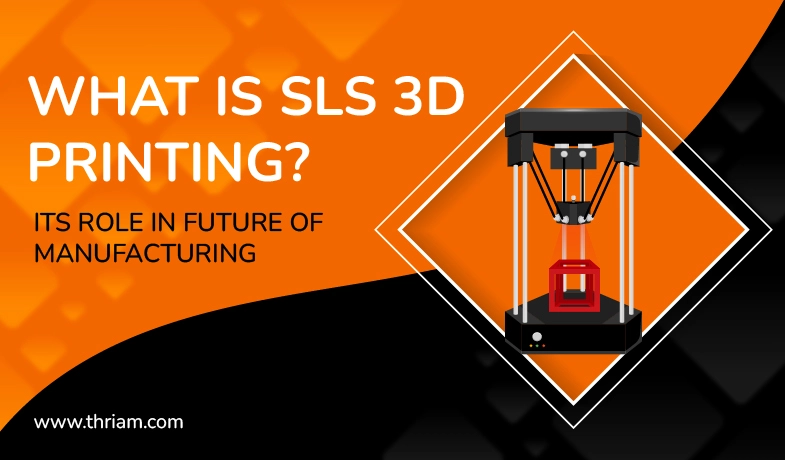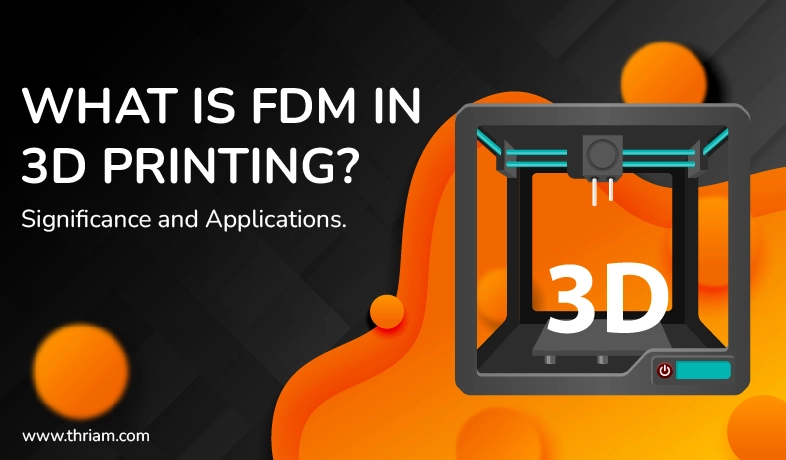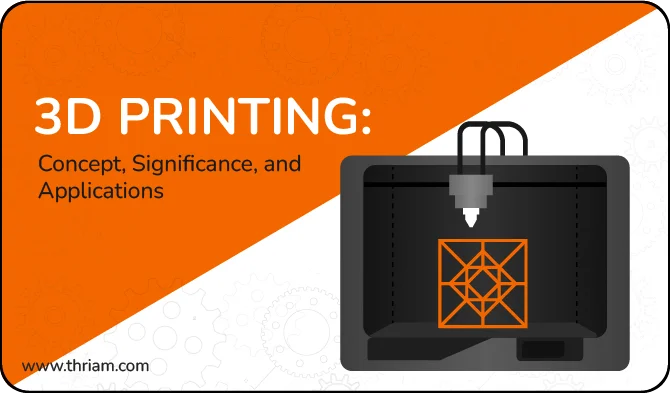Comprehensive Guide to SLA 3D Printing
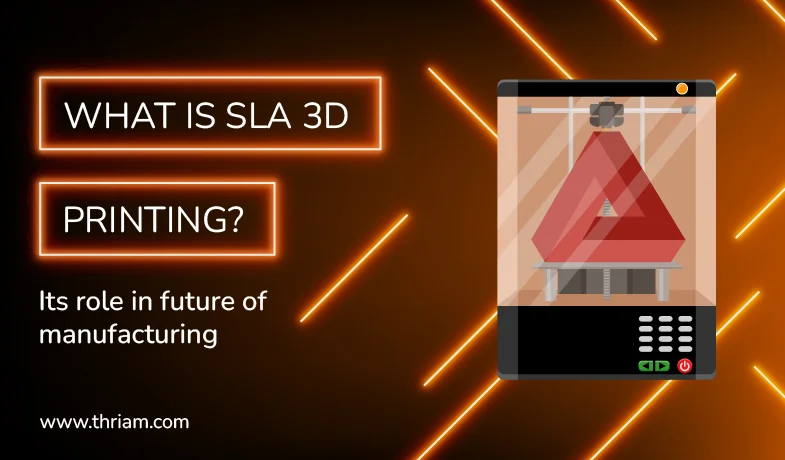
Introduction:
SLA (Stereolithography) is a 3D printing method that involves using a laser to cure a liquid resin into solid objects. It is an important technology in the field of additive manufacturing and has gained popularity due to its high level of detail and accuracy. This guide aims to provide a comprehensive understanding of SLA 3D printing, from its history and working principles to its advantages, applications, and practical tips for achieving optimal results.
History and Evolution
SLA 3D printing was first invented in the early 1980s by Charles W. Hull. Since then, the technology has undergone significant advancements. Key milestones include the development of improved resins, introduction of desktop SLA printers, and the integration of software solutions for better workflow optimization.
How SLA 3D Printing Works
Materials used in SLA 3D Printing
SLA 3D printing utilizes liquid photopolymer resins that solidify when exposed to a specific wavelength of light. These resins come in a variety of types, such as Standard, Flexible, Tough, and Castable, each suitable for different applications.
How SLA 3D Printers Work
SLA printers consist of three main components: a build platform, a resin vat, and a laser. The process starts by filling the resin vat and leveling the build platform. The laser then selectively cures the resin, layer by layer, according to the 3D model's cross-sections. As each layer is cured, the build platform gradually moves up, creating the final object.
Step-by-step process of SLA 3D printing:
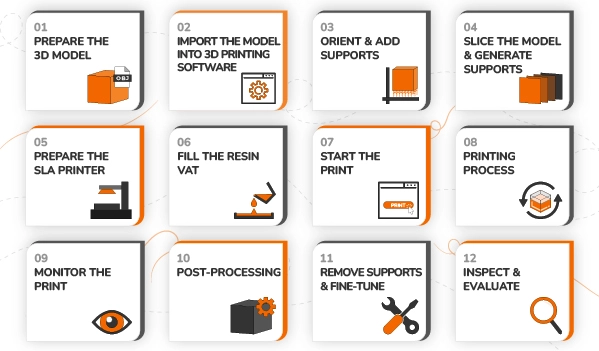
- Prepare the 3D Model: Start by creating or obtaining a 3D model that you want to print. Make sure the model is in a suitable format such as STL or OBJ.
- Import the Model into 3D Printing Software: Use 3D printing software (such as PreForm, Formware, or Chitubox) to import the 3D model. Position and scale the model as desired, taking into account the build volume limitations of your SLA printer.
- Orient and Add Supports: Proper orientation and support structure placement are crucial for successful SLA printing. Orient the model to minimize the need for support structures and ensure adequate support for overhangs and delicate features. Add supports using the software's tools, considering factors like stability and ease of removal.
- Slice the Model and Generate Supports: Using the same software, slice the model by dividing it into layers. Adjust the layer height and other printing settings according to your requirements. Generate or fine-tune the support structures, ensuring they adequately hold up the model during printing but are also easy to remove later.
- Prepare the SLA Printer: Check the resin level in the resin vat of the SLA printer. Ensure that the build platform is clean and positioned correctly. Some printers may require a release agent or build platform adhesive to aid in print adhesion.
- Fill the Resin Vat: Pour the desired resin into the resin vat, ensuring it is filled to the recommended level. Take care to avoid spills or contamination.
- Start the Print: Transfer the sliced model file to the SLA printer using the appropriate method (USB, SD card, Wi-Fi, etc.). Start the print job according to the printer's instructions.
- Printing Process: The SLA printer will begin the printing process. A laser or light source will selectively expose the liquid resin, solidifying it layer by layer based on the instructions from the sliced model. The build platform will gradually move up as each layer is cured.
- Monitor the Print: Keep an eye on the printing process to ensure everything is working properly. Check for any errors or anomalies that may occur during the print and address them accordingly.
- Post-Processing: Once the printing is complete, carefully remove the print from the build platform. Rinse the print in a cleaning solution (usually isopropyl alcohol) to remove excess resin. You may also use a brush to clean intricate areas. Cure the print further under UV light to fully harden the resin.
- Remove Supports and Fine-Tune: Carefully remove the support structures using appropriate tools, taking care not to damage the printed object. Sand, polish, or perform any additional finishing steps to achieve the desired surface quality and appearance.
- Inspect and Evaluate: Thoroughly inspect the final print for any defects or imperfections. Evaluate the print quality and make notes for future improvements or adjustments in the printing process if required.
Advantages and Disadvantages
Advantages of SLA 3D Printing
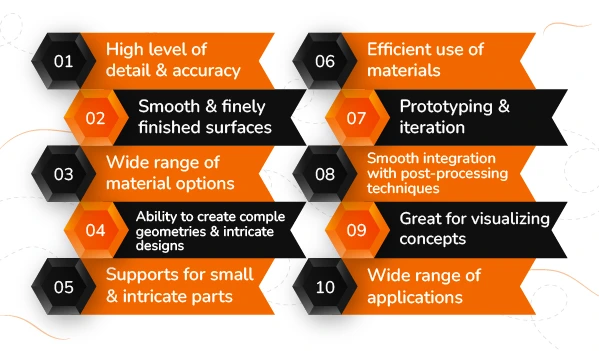
- High level of detail and accuracy: SLA printers are capable of producing intricate and highly detailed prints, capturing even the finest features and textures.
- Smooth and finely finished surfaces: SLA prints exhibit a smooth surface finish with minimal visible layer lines, making them ideal for applications requiring a high-quality, professional appearance.
- Wide range of material options: SLA printing offers a variety of resin materials to choose from, ranging from standard and flexible resins to specialized options like clear, tough, and castable resins. This allows for versatility in terms of object properties and applications.
- Ability to create complex geometries and intricate designs: SLA printers can produce complex and intricate designs that may be challenging or impossible with other 3D printing methods. The layer-by-layer curing process allows for precise control and the creation of intricate internal structures.
- Supports for small and intricate parts: SLA printing is particularly well-suited for small and delicate parts, where precision and fine details are crucial. The ability to print thin walls and intricate features makes it an excellent choice for jewelry, miniatures, and other precision applications.
- Efficient use of materials: SLA printing typically results in less wasted material compared to other 3D printing technologies. As the resin is used selectively to solidify each layer, there is minimal material wastage.
- Prototyping and iteration: SLA printing is widely used in rapid prototyping due to its ability to quickly produce accurate and highly detailed prototypes. This allows for faster design iterations and iterations, facilitating the development and refinement of products.
- Smooth integration with post-processing techniques: SLA printed objects can be easily post-processed with techniques like polishing, sanding, or painting to achieve the desired final appearance. The smooth surface finish allows for consistent and effective post-processing.
- Great for visualizing concepts: SLA prints are visually appealing and can effectively communicate design concepts and ideas. They are often used for presentations, demonstrations, and marketing purposes.
- Wide range of applications: SLA printing finds applications in various industries, including product development, jewelry, dental and medical fields, engineering, architecture, and artistic creations.
Disadvantages of SLA 3D Printing
- Higher cost compared to other 3D printing methods, including material and machine costs.
- Limited build size, which may be a constraint for larger objects or parts.
- Longer printing times compared to some other 3D printing technologies. Due to the layer-by-layer printing process, it takes more time to complete a print.
- Higher skill level required for successful printing and post-processing. SLA printing involves complex processes, and post-processing requires careful handling and attention to detail.
- Resin exposure to UV light can be dangerous and may require additional safety and protective measures.
- Certain types of resins can be messy and may leave behind residue on surfaces or clothing.
- Resins can also emit odors or fumes during printing. The odor may be unpleasant and may require adequate ventilation.
- Resins have a limited shelf life and must be stored correctly to prevent degradation.
- Certain resins may be sensitive to environmental factors like temperature and humidity, which can affect print quality.
- The final printed object may not be as durable or strong as those produced with other 3D printing technologies, depending on the resin type and application.
Applications of SLA 3D printing
SLA 3D printing finds applications in various industries, such as:
- Prototyping for product development
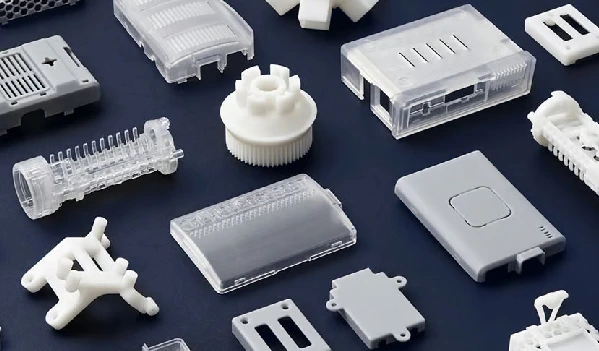
Image Source - Shapeways
- Jewelry manufacturing

Image Source - Aniwaa
- Dental and medical applications
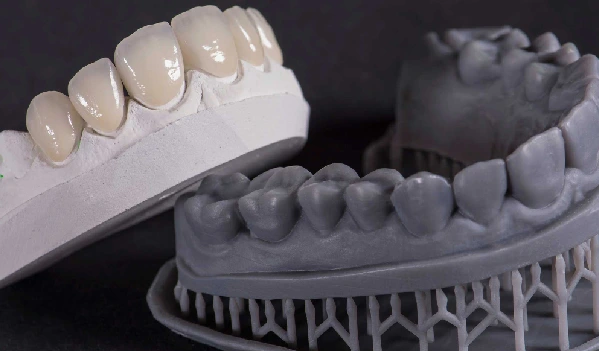
Image Source - Dentistry
- Engineering and architecture
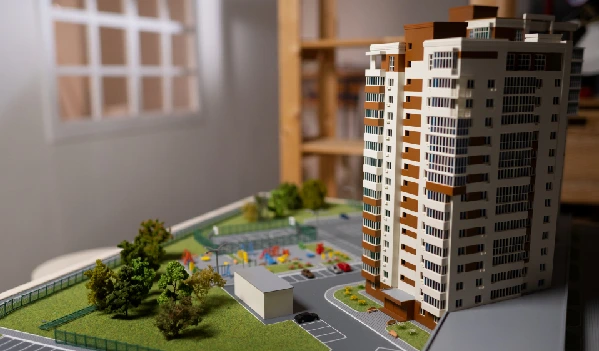
- Miniature figurines and collectibles

- Artistic creations
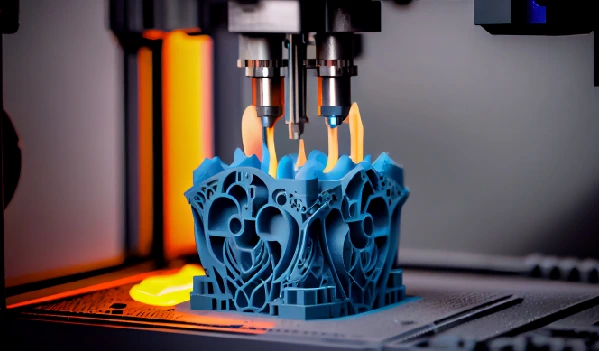
Several successful projects have utilized SLA 3D printing, showcasing the versatility and quality of the technology.
Tips and Tricks
To achieve the best results with SLA 3D printing, consider the following tips:
- Use proper supports and orient the model correctly to ensure successful printing.
- Pay attention to the resin's exposure settings and adjust them based on the model's requirements.
- Choose the appropriate resin type for your intended application.
- Post-process the prints carefully to achieve the desired finish.
- Regularly clean and maintain the SLA printer to optimize performance and extend its lifespan.
Troubleshooting common issues, such as failed prints or poor adhesion, requires understanding potential causes and implementing appropriate solutions.
Conclusion
SLA 3D printing is a powerful technology that enables the creation of precise and intricate objects. With its high level of detail, smooth surfaces, and wide range of applications, SLA 3D printing continues to evolve and revolutionize various industries. By following this comprehensive guide, both beginners and experts can gain a solid understanding of SLA 3D printing and unlock its full potential for their projects.
